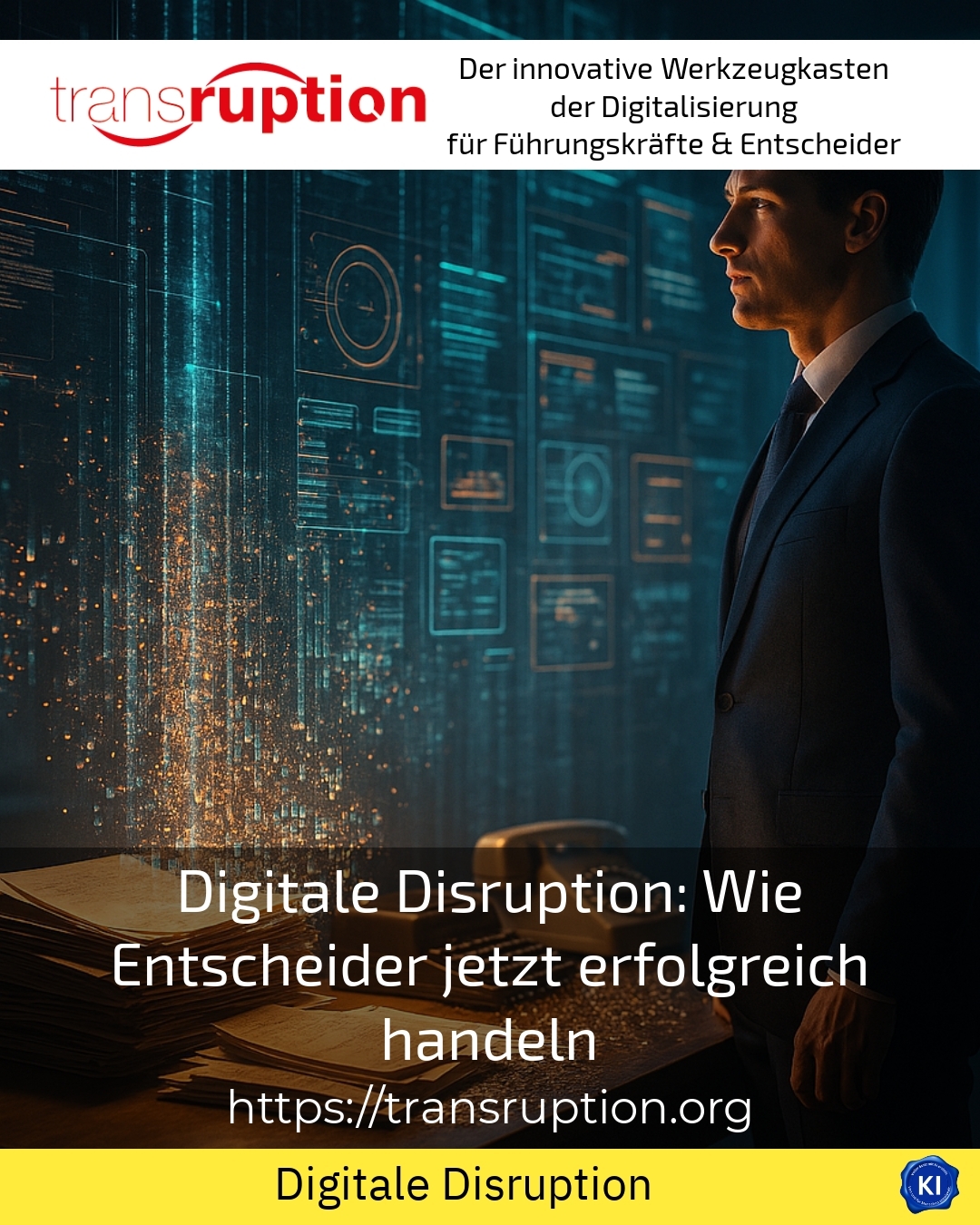The Digital disruption is rapidly changing business models and entire industries. Decision-makers today face the challenge of not only understanding these upheavals, but also responding to them proactively. Because only those who recognise the dynamics of Digital disruption The company can ensure sustainable success and expand its competitive advantage by understanding its business and developing the right strategies.
Why digital disruption affects all industries
The Digital disruption means far more than just a technical change. It is leading to fundamental changes in the way products are developed, services are offered and customer experiences are designed. Examples from a wide range of sectors show how rapid and far-reaching these changes are:
In retail, the rise of platforms such as Amazon has redefined the market landscape. Traditional retailers must adapt to changing customer expectations and integrate digital sales channels more closely in order to remain competitive.
The entertainment industry is undergoing a revolution thanks to streaming services such as Netflix and Spotify. They are setting new standards in media usage, which is having a major impact on film distribution and music sales.
In the mobility sector, companies such as Uber are relying on digital platforms that are reshaping access to transport services and challenging traditional taxi companies.
Successful action in the age of digital disruption
Decision-makers today have to react flexibly and find new ways to embed digital innovations in a meaningful way. It is no longer enough to digitally transform existing processes. Instead, business models need to be radically scrutinised and, if necessary, reinvented.
Three tips for action are particularly in focus:
- Recognising the potential of disruptive technologies such as artificial intelligence or the Internet of Things at an early stage and testing them in pilot projects.
- Develop innovative business models, for example platform models or subscription systems that address customer needs more flexibly.
- Systematically integrate customer feedback in order to continuously improve offers and adapt them to dynamic market conditions.
Best practice is also evident in the SME sector: a manufacturer of industrial production machinery uses digital remote maintenance solutions to reduce service costs and increase customer satisfaction at the same time. At the same time, data-driven analyses were used to develop new product features that are tailored to customer requirements.
Another industrial customer relies on a digital platform to efficiently network suppliers. This has enabled them to shorten production times and improve delivery reliability, which brings decisive advantages in a highly competitive environment.
Clinics are also experiencing digital disruption in the healthcare sector through telemedicine. Patients receive prompt access to experts, which increases treatment success and reduces waiting times.
BEST PRACTICE at the customer (name hidden due to NDA contract) Support with the introduction of a digitalised service platform that monitors technical maintenance and independently generates appointment proposals. This led to a noticeable reduction in downtimes and improved resource planning at the same time.
Digital disruption as an opportunity for business innovation
New digital business models often arise from the combination of existing resources and modern technology. Examples show how this change is opening up new markets for companies.
A classic example is Airbnb, which enables private individuals to rent out their homes easily. This platform digitally connects supply and demand, creating a completely new market in the accommodation segment.
Uber's model, which connects drivers and passengers directly via an app, is similar and is changing the taxi industry significantly.
FinTechs are also driving disruption in the financial sector with digital payment solutions and cryptocurrencies. They are improving accessibility and user-friendliness for customers worldwide.
Practical tips for decision-makers when dealing with digital disruption
In order to be able to Digital disruption a structured approach is recommended:
- Regularly review corporate strategy for digital trends and run through scenarios for possible cases of disruption.
- Put together interdisciplinary teams from IT, marketing and product development that can react to changes in an agile manner.
- Promote continuous training in digital skills to strengthen innovative strength.
Clients often report that an open corporate culture that sees experimentation and mistakes as learning opportunities is particularly helpful. This often results in new ideas and opportunities before competitors react.
Digital tools are also supporting the change. Cloud services, big data analyses and AI-based assistance systems are just a few examples that make everyday operations more effective.
My analysis
The Digital disruption is an ongoing process that poses major challenges for traditional business models. Nevertheless, it also offers great opportunities for reorganisation and innovation. Decision-makers can accompany this development with targeted action and make their companies sustainably fit for the future. Success factors here are openness, a continuous willingness to learn and the ability to quickly translate new technological possibilities into useful applications.
Further links from the text above:
Digital disruption - definition, explanation and tips - nerdly
Disruptive business models: creating new markets
Digital disruption: How decision-makers can now successfully ...
For more information and if you have any questions, please contact Contact us or read more blog posts on the topic TRANSRUPTION here.















